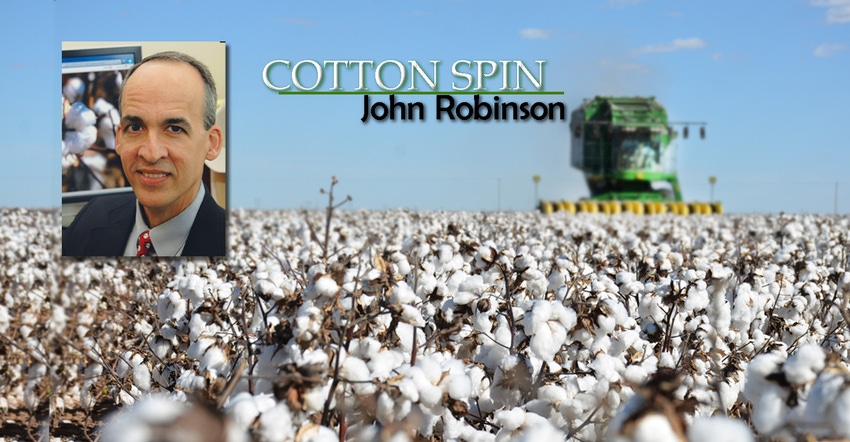
August is the beginning of the 2023/24 marketing year for U.S. cotton. USDA marked the occasion with mostly bullish month-over-month adjustments in their WASDE report. On the supply side, USDA raised world beginning stocks by 180,000 bales, mostly from increases in the U.S. (+450,000), Australia (+400,000), India (+100,000), Bangladesh (+100,000), Central Asia (-70,000) and Pakistan (+50,000), all of which was partially offset but decreases in China (-630,000), West Africa (-300,000), Mexico (-150,000), and Turkey (-80,000). USDA then reduced world production a substantial 2.72 million bales, mostly in the U.S. (-2.51 million) and Central Asia (-220,000). World imports were raised 390,000 bales, mostly in China (+250,000), a whole bunch of minor importers (+140,000), and with Turkey and Indonesia cancelling each other out.
On the demand side, world exports were raised 350,000 bales, mostly in Brazil (+1.5 million) and Australia (+100,000), offset by a 1.25 million bale decrease in the U.S. World consumption was raised 490,000 bales, most of which was in China (+500,000). In summary, a lot less production reinforced by net greater consumption resulted in a 2.92 million bale decrease in world-ending stocks. This adjustment would be bullish according to history and economic theory.
Focusing on the U.S. balance sheet, the August adjustments reflected an increase in U.S. abandonment from 14% in July to 22%. However, the national average cotton yield was lowered from 831 to 779 pounds were acre. The combination of these adjustments lowered U.S. production by 2.5 million bales. Considering a reduction in U.S. exports, the bottom line of the August WASDE numbers was a reduction of U.S. ending stocks from 3.8 to 3.1 million bales. This is bullish both in the adjustment and in the resulting low level.
Where do we go from here? The northwestern Texas cotton crop is behind schedule. The current heat wave is taking its toll… unless of course there are some late August and early September rains. There are late-season risks in the Gulf Coast and Atlantic regions from damaging tropical rains or sloppy harvest weather. Updated data on acres, yields, bales ginned, and bales classed will clarify the production picture. Short of some timely rain in the next month, I expect more heat-damaged cotton fields in Texas will be zeroed out than is currently reflected in USDA’s balance sheet. Of course, stronger-than-expected crops in the eastern Cotton Belt could balance things out. So, we’ll have to see.
For additional thoughts on these and other cotton marketing topics, please visit my weekly on-line newsletter at http://agrilife.org/cottonmarketing/.
About the Author(s)
You May Also Like




